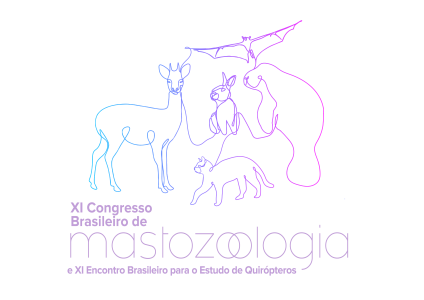Dados do Trabalho
Título:
LESSONS LEARNED FROM LONG-TERM MONITORING OF WILDLIFE UNDERPASSES ALONG ROADS IN WESTERN SAO PAULO STATE, SOUTHEASTERN BRAZIL
Resumo:
The chronic death of wild animals on roads caused by vehicle-collisions has the potential to alter the demographic structure and create sinks of local populations. In the State of São Paulo alone it is estimated that an average of 39,605 medium and large-sized mammals are roadkilled per year. These rates are alarming, especially for species already in danger of extinction. The most common and efficient strategies to reduce mammal road mortality have been the association of wildlife underpasses or culvert with fences reducing up to 86% of animal deaths. In Brazil, some highways have these mitigation measures, but little is known about their efficiency in reducing road mortality and increasing the structural and functional connectivity of the landscapes. In addition, ICMBio's National Action Plans, such as those for threatened species of canids, big cats, and ungulates, point to the need to investigate which types of fauna passages are most suitable for specific species, in addition to understanding if there is seasonality and if the landscape influences the use of fauna passages. This study was conducted on three major highways SP-225, SP-327 and SP-270 in western São Paulo state, southeastern Brazil where we monitored 35 wildlife underpasses with camera traps in full-time operation for 51 months. The cameras were placed in the entrances of the underpasses, allowing us to detect acceptance and rejection rates. The monitored round (drainage culverts) or square (cattle boxes) structures with an average of 2 m wide. These three highways were recently upgraded for 4-lane roads with shoulders and are currently managed by a private toll road company - CART. This part of the state was originally covered by Atlantic rainforest and the Brazilian savannah, both considered global biodiversity hotspots. Along 51 months, we recorded 15,089 individuals of nine different orders and 30 different species of wild mammals using the structures in complete crossings. The most common species using the structures were: Capybara (Hydrochoerus hydrochaeris, N = 5,436, 36%), Nine-banded armadillo (Dasypus novemcinctus, N = 2,115, 14%), nonidentified bats (n = 1,852, 12.3%), Six-banded armadillo (Euphractus sexcinctus, N = 1124, 7.4%), and Crab-eating fox (Cerdocyon thous, N = 912, 6%). It was interesting to note that some carnivore species such as Crab eating fox, Maned wolf (Chrysocyon brachyurus), Coati (Nasua nasua) and Hoary fox (Lycalopex vetulus) have clear preferences to use dry underpasses. Other frequent species such as Puma (Puma concolor), Lowland Tapir (Tapirus terrestris) and Giant anteater (Myrmecophaga tridactyla) did not show preference for specific structures or presence/absence of water. Fauna passages located in more conserved landscapes, with the presence of forest fragments, showed greater species richness and crossings of threatened species compared to fauna passages in less conserved areas. Knowing the most suitable types of fauna passages for specific species is not only important for ecology professionals, but also for road planners who will be able to use this information for planning mitigation measures for new roads or to upgrade existing ones.
Financiamento:
Área
Conservação
Autores
FERNANDA DELBORGO ABRA, LETICIA PRADO MUNHOES, BEATRIZ LOPES, RAPHAEL DE OLIVEIRA, DANILO COSTA SANTOS, Pedro Enrique Enrique Navas Suárez, Luiz Antonio Gambá, Pablo Campregher, Paula Prist
